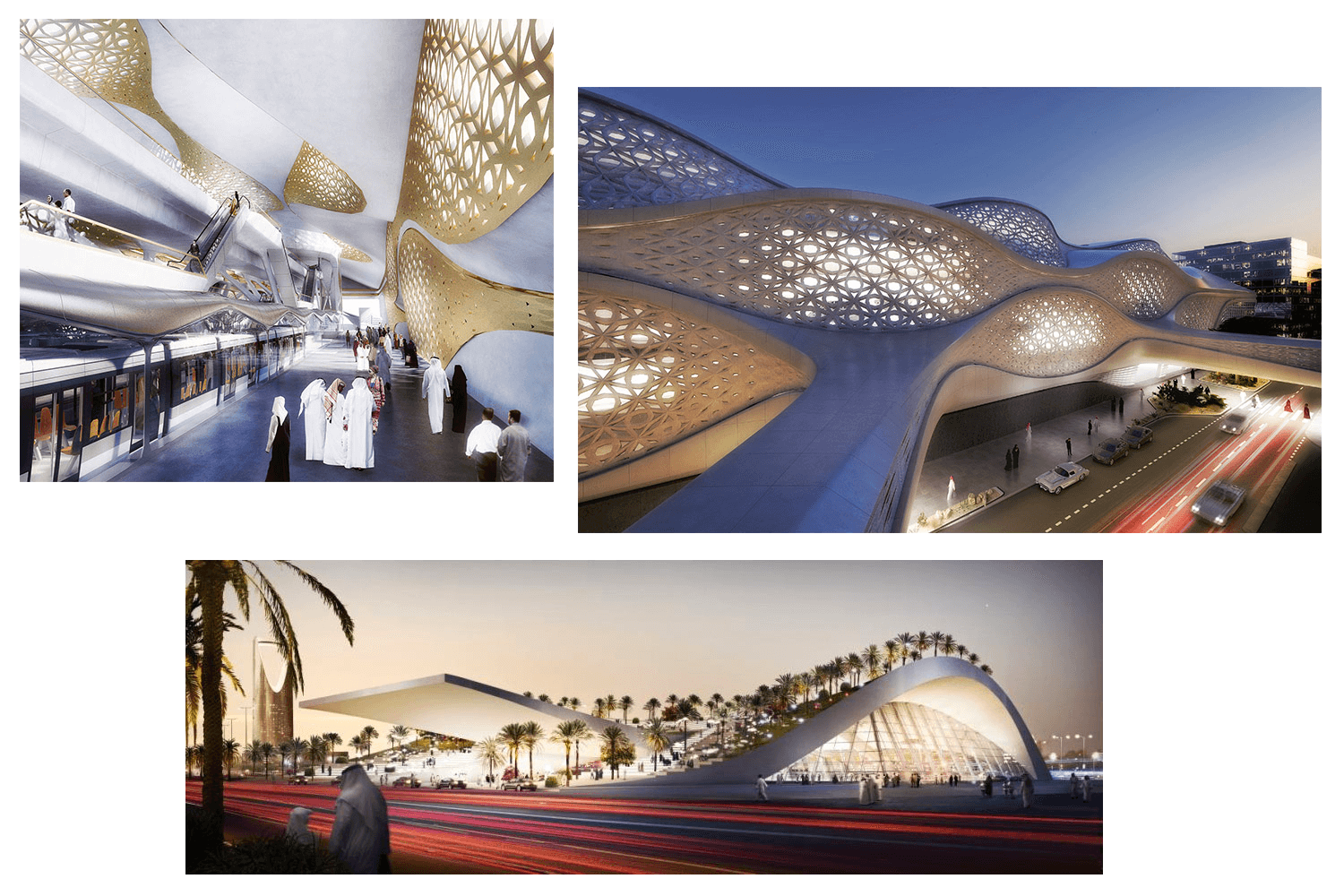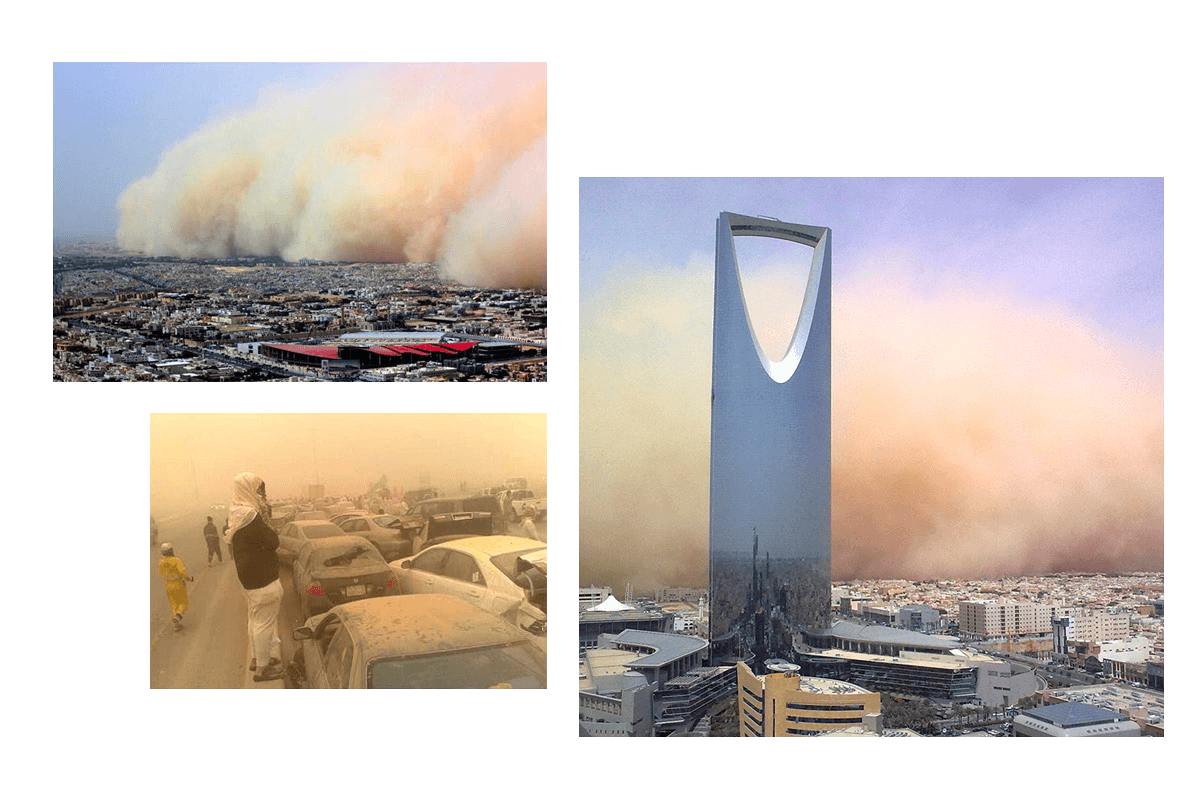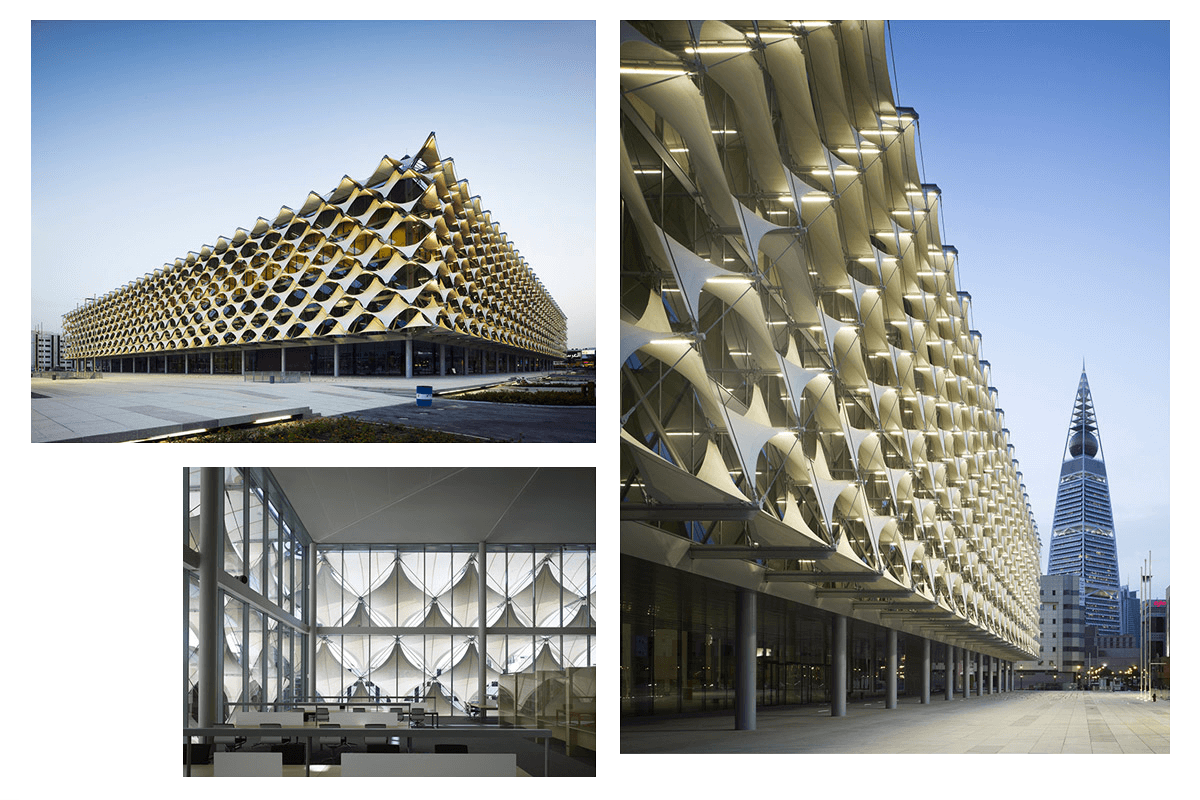Riyad.
Part One. Modernity
Riyadh is the capital of Saudi Arabia. It is not like Dubai, which is adjacent to the sea; it is a city located in the heart of the desert.
Alluring from afar with its skyscrapers and enchanting Saudi wealth, up close Riyadh dissolves into dust, engulfing itself in a sandstorm.
Upon departure from Istanbul, a prayer in Arabic is recited. The entire plane resonates with the chant of “Allahu Akbar!” Such an occurrence could catch one off guard if unaware that it is simply a Muslim prayer similar to the “Our Father” prayer. This is included on all flights within Saudi Arabia. Many passengers pray directly in their seats before takeoff and during the flight.
The airport in Riyadh turns out to be a run-down small airfield in the sands, completely incomparable to Dubai’s airport. As it unfolds, the entire city is like that as well.
Usually, when people talk about Saudi Arabia, they mention skyscrapers. Most often, the Kingdom Tower comes to mind, which externally resembles either Sauron’s eye or a beer bottle opener.

Sometimes, another skyscraper in Riyadh is also mentioned — the Al Faisaliah Tower with a spherical top.

It is unlikely to find any other photographs of Saudi skyscrapers since there isn’t much else of note in Riyadh or Saudi Arabia as a whole.
Let’s take a look at King Fahd Road — the main street of Riyadh.

It looks fairly decent, but that’s all there is in the city. If you approach these business centers more closely, it turns out that right in front of them are abandoned wastelands with piles of garbage and broken-down cars.

The streets and adjacent pedestrian areas between these skyscrapers are broken and cluttered with plastic barriers.

Such a completely chaotic mess, with a glass monolith sticking out in the middle.

The city center: skyscrapers, business centers of the great Kingdom, an oil powerhouse. And parking right on the sand. It strongly resembles some other country.

One can count the clean streets in Riyadh on their fingers.

Sometimes you come across something like a summer café. For most of the year, it is unbearably hot outside, so Arabs prefer to sit indoors.

Occasionally, small green areas can be found where someone is even lying down and relaxing. However, all of these are poorly maintained patches of scorched land littered with plastic bottles and bags.

In the center, a dreadful playground was found.

A couple of times, even a city map was encountered. Why is it here? Walking around is still impossible, and there are no tourists.

Let’s return to the main street again. Almost flawless road surface, with lanes not painted but embedded in the asphalt through metal inserts. Beautiful! However, pedestrian infrastructure is completely absent here.
In Riyadh, it is easy to drive up to the desired store (as along all the highways in Saudi Arabia, there is nothing else but various shops), park, go to the store, get back into the car, and continue driving. However, it is impossible to walk on a proper sidewalk, even between two nearest stores, even if they are just ten meters apart. One constantly has to go around obstacles and step over things.

In the center of Riyadh, there are overpasses for pedestrians placed roughly every kilometer, similar to the one in the previous photo. The next shot was taken from one of these overpasses. In the farthest part of this photograph, you can make out the next overpass. There is simply no other way to cross the highway.
The overpasses were constructed wherever necessary. The author once found themselves exactly in the middle between two of them. Right in front stands a business center where I needed to go. There it is — just 50 meters away from you — just cross the road! But to reach it, one would have to take a detour of about a kilometer under scorching 40-degree heat. As a result, I had to catch a taxi, which took about 20 minutes due to traffic.

Yes, Saudi Arabia is not at all pedestrian-friendly. Even ATMs are designed in such a way that you can drive up to them. Of course, one can understand the Arabs — it’s really difficult to be outside in such heat. But there are pedestrians in other capitals of the world where it is equally hot.
However, the most surprising thing is that there is no public transportation in Saudi Arabia. I don’t mean to say that it’s scarce; it simply doesn’t exist! Not a single city in this country has buses, minibusses, trolleybuses, trams, metros, monorails — absolutely nothing!
How do you capture in a photograph something that doesn’t exist? Let’s take a high-angle view of the traffic flow. Is there a single bus, minibus, or transport stop in it? Not a hint of anything.

As an exception, there are charter and school buses, as well as some minibusses for workers, where no one else is allowed. However, all the roads in Saudi Arabia are filled with taxis. Every tenth car is a taxi. Almost all cars are white.

They plan to build a metro in Riyadh in the near future. An elevated track has already been laid through the city center, and the news often mentions that it will be made of almost gold. But in Riyadh, it is still in the planning stage. Meanwhile, in neighboring Dubai, it has been operational for a long time.

Let’s take a closer look at Riyadh from a higher perspective. The city has two observation decks located on those two skyscrapers. The crossbar on the tower is actually enclosed with glass and is called the “Sky Bridge.”

City view. One small block of skyscrapers in the center, and on both sides — residential Arabic houses.

The view in the other direction is even worse. In the distance, they are constructing a new business center, while in the middle lies a large vacant lot. Of course, someday this empty space will be filled with skyscrapers, but it won’t happen anytime soon.

On the left and right sides of Riyadh’s center, there is dense residential development. Two-story Arabic houses stretch all the way to the horizon.

One Arab, looking at Riyadh together with me, walked and murmured to himself: “Houses, streets, houses, streets...”. Indeed, it’s just houses and streets. No parks, no playgrounds.


The observation deck on the Kingdom Tower is the most liberal place in Riyadh. Only here can you encounter expats wearing shorts and t-shirts. Normally, wearing shorts is prohibited in Saudi Arabia, but even the Arabs themselves relax here. Moreover, you can freely photograph anything you want here.

The situation is completely different on Faisalia Street. The first time I walked there with a camera, I had no problems. However, the second time, when I wanted to capture the city at night, a security guard attacked me:
“Is this a professional camera?”
“No, just a regular one.”
“I’ll let you through, but you won’t be able to take photos. If you try, we will escort you out. I will give instructions for the security upstairs to keep an eye on you.”
“Uh, why? Can’t I take photos of the city?”
“You have a professional camera. You may capture people walking on the street. Taking pictures of people without their permission is prohibited. So, hide your camera and use your phone to take pictures.”
What can I say? Photography in Riyadh is indeed very difficult. Taking pictures of people without permission is not allowed. Of course, few will pay attention to you unless you openly start photographing women. However, the police can check your documents and look at your photos even if you’re just walking around with a camera hanging on your neck. Riyadh is incredibly paranoid.

From the second observation deck, there is a good view of the “bottle opener.”

Sometimes sandstorms occur in Saudi Arabia. During those times, this view becomes completely immersed in sand. It looks intimidating when a kilometer-long wall of sand approaches the city. But sandstorms are not only frightening in appearance; they are also dangerous. In addition to asthma, the sand carries infectious diseases, the source of which is somewhere in the desert but has not been precisely determined yet.

The modern architecture of Riyadh is terrible. The city is cluttered with hastily constructed skyscrapers and business centers made of cheap glass.

Here is an incredibly scary building five minutes away from Faisalii. And once again, instead of a street, there is a sandy vacant lot where cars are parked.

With the exception of the “bottle opener,” there is exactly one building in Riyadh with truly good architecture — the national library.
Originally, the old Arabic building was elegantly wrapped in packaging. Transparent walls were created, and the halls were expanded. To protect the glass structure from the scorching sun, the facade of the library was covered with a texture of diamond-shaped canopies that allow minimal sunlight to pass through while preserving the view of the street. The result is a magnificent architectural specimen.

Next to the library, there is a decent green area.

There is nothing more to say about modern Riyadh. At night, the city center is adequately illuminated. Since unbearable heat persists during the day, the timing here is shifted. After sunset and until midnight, you can even encounter some people on the streets. Arabs emerge from malls.

However, the streets are still deserted, and it is extremely unpleasant to photograph lonely people in Riyadh. People here generally regard someone with a camera as an idiot unless they are capturing a skyscraper or something similar.

Although Saudi Arabia is a wealthy country, most shops outside of shopping centers here resemble stalls at a flea market, where they sell everything.

Saudi Apple reseller.

Jewelry store.

The lighting of the “opener” is quite weak, although it looks slightly better alive.


The nighttime view of the city from the skyscraper is rather bleak.


Riyadh attracts from a distance with its beautiful image and extreme seclusion. However, as you approach closer, the mysterious veil of Saudi Arabia dissipates, revealing nothing more than a couple of skyscrapers and an unbearable monotonous life.

But apart from the failed skyscrapers, Riyadh has one somewhat interesting thing that is not found in other countries: public executions. Read about it — in the next part.


